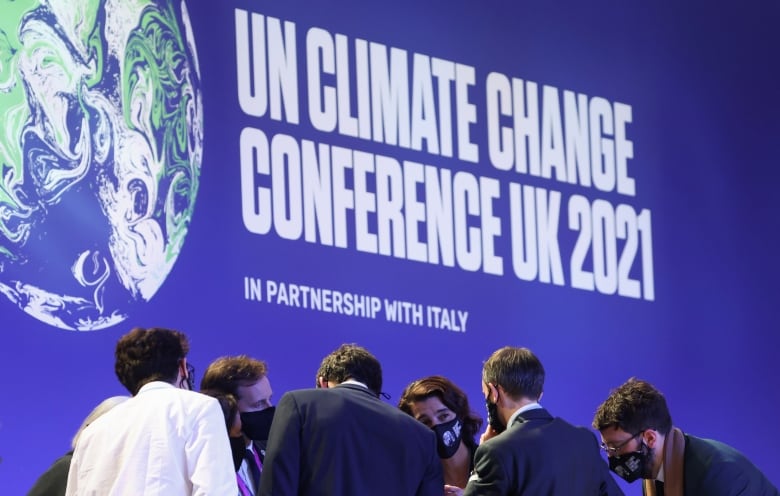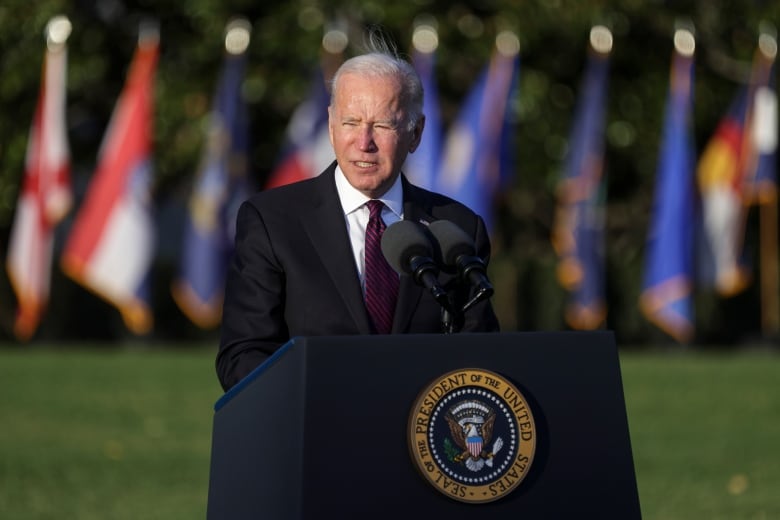The last two years have taken energy markets on a wild ride, with oil prices crashing through the basement at the outset of the pandemic and climbing to more than $85 US a barrel last fall.
Alberta drillers and service companies have been talking about the risk of labour shortages, not layoffs. More activity is expected in Canada’s oilpatch in the year ahead.
But talk of energy these days is rooted in two worlds — the demands of today and the transition ahead — as decarbonization efforts come into even sharper focus with climate change.
These are some of the stories to watch in energy in the coming months.
High gasoline prices
Motorists saw pump prices soar last year. Statistics Canada’s most recent inflation report found that gasoline prices rose by 43 per cent in the year up to November.
Fuel prices surged as demand and economic activity began returning from the pandemic lows that had spurred oil production cuts around the globe.
The North American benchmark price for oil climbed well above $75 US per barrel last week. The average retail gasoline price in Canada climbed to over $1.48 a litre, according to Natural Resources Canada.
Motorists may not get much reprieve for several months.

Patrick De Haan, head of petroleum analysis at GasBuddy, expects gasoline prices to begin to rise again in March after seasonal declines in January and February. He said prices in 2022 could top last year’s figures.
“I do expect that the high prices will bring on additional production,” he said. “But we’re going to have to wait until the closing innings of 2022 to really start to see meaningful relief.”
A busier oilpatch
Oil prices are forecast to bolster government revenues and drilling activity, although some industry officials have worried recently about finding all of the workers they need.
The Canadian Association of Energy Contractors said in November it is anticipating 6,457 oil and gas wells to be drilled this year, a more than 25 per cent increase from 2021.
Natural gas is also expected to keep making news as the impact of higher prices ripples out across economies, driving up heating and energy costs for consumers.
But those energy prices have, as ATB Financial noted, been a “much-needed balm” for the Alberta economy and helped oil and gas producers rebuild their balance sheets, thanks to some robust cash flows.

“Definitely some new life was put into the industry, both on the oil development side as well as the [natural] gas,” said Morgan Kwan, a Calgary-based senior vice president on the energy and analytics intelligence team at Enverus, a global energy data analytics firm.
The Omicron variant of the coronavirus adds uncertainty to the outlook, but the OPEC oil cartel signalled recently that it doesn’t expect the variant to hammer demand as hard as earlier feared.
Pipeline strife
Last year began with the White House halting completion of the Keystone XL pipeline, with Calgary-based TC Energy now pursuing a $15-billion trade claim.
More cross-border wrangling is likely over Line 5, which carries about 87 million litres of crude oil and natural gas liquids a day between Superior, Wis., and Sarnia, Ont., passing through northern Wisconsin and Michigan’s Upper Peninsula.
Michigan Gov. Gretchen Whitmer wants to see it shut down, concerned about the risk of a leak. Last fall, Ottawa invoked a dispute resolution process contained in a 1977 pipeline treaty with the United States in support of its operation, citing its “significance for Canadian economic and energy security.”
Domestic pipelines continue to be a source of oilpatch optimism and scrutiny, too.

The Coastal GasLink project, which would transport natural gas to British Columbia’s coast for export, has continued to draw protesters after high-profile arrests on Wet’suwet’en territory last fall.
Coastal GasLink has signed deals with 20 elected band councils along the pipeline route, including in Wet’suwet’en territory, but has not won approval from the majority of hereditary chiefs.
Work is ongoing on the contentious Trans Mountain pipeline expansion project from Alberta to B.C. The federal government-owned project is expected to be online by early 2023. Operation of the existing line was temporarily shut down during unprecedented flooding in B.C. last year.
Climate scrutiny
Oil companies and politicians made big promises last year about how they intend to reduce carbon emissions in the face of intensifying climate change.
Now people are waiting for the followup. Investor scrutiny — and divestment — are part of a market that is increasingly weighing climate change and climate risk.
Several oilsands producers pledged last year to achieve net-zero emissions by 2050.
Those plans lean on the promise of carbon capture, utilization and storage (CCUS) technologies. They also include a big ask from government — something strongly opposed by groups such as Environmental Defence Canada.
At the federal level, the Liberal government is expected to release details of its plans for the Canadian Net-Zero Emissions Accountability Act, which was passed in June.
Warren Mabee, director of Queen’s Institute for Energy and Environmental Policy in Kingston, Ont., is expecting the plan to show how a country dependent on fossil fuels will begin moving toward net zero.
“Lots of us have been thinking about this for years, but this is the first time that we’re going to see the government start to lay out that plan,” said Mabee, who expects the news in March.
“How much renewable energy is the government anticipating comes on board? What is the role of things like carbon capture and sequestration? What is the role of hydrogen?”
Mabee said he’s also watching to see how technology evolves to help with the energy transition, such as geothermal energy and improvements in battery storage.
“It’s the really interesting stuff that could totally change the landscape,” he said.

Energy transition and disruption
International climate talks in Glasgow last fall again emphasized the need for a transition to renewable energy sources, and while there was global progress in renewable growth in 2021, experts say it’s clear such goals will require more work — and soon.
The International Energy Agency reported last month that additions of renewable power capacity were on track to set another annual record in 2021. But it also said the current pace isn’t enough to put the world on course for net-zero emissions by 2050.
Adding to the discussion is the notion that even with commitments to decarbonize, as one analyst said, it’s pretty clear the world doesn’t settle for energy scarcity either. Thermal coal, for example, saw record prices in some markets in October amid tight supply and power shortages.
“There’s a bit of an energy crunch going on, and we’ve seen everything spike,” Nick Volkmer, a vice-president with Enverus, said in an interview last month.

People will also be watching for developments in the U.S., as some of President Joe Biden’s ambitious renewable energy plans face an uncertain political future.
“President Biden has run into some headwinds on his Build Back Better spending package, which included a lot of … renewable energy-related projects, incentives for electric vehicles, things like that,” Mabee said.
The situation has raised questions about how the White House will reach its international climate promises and underscored the political complexity of the energy transition in the world’s largest economy.













Leave a comment